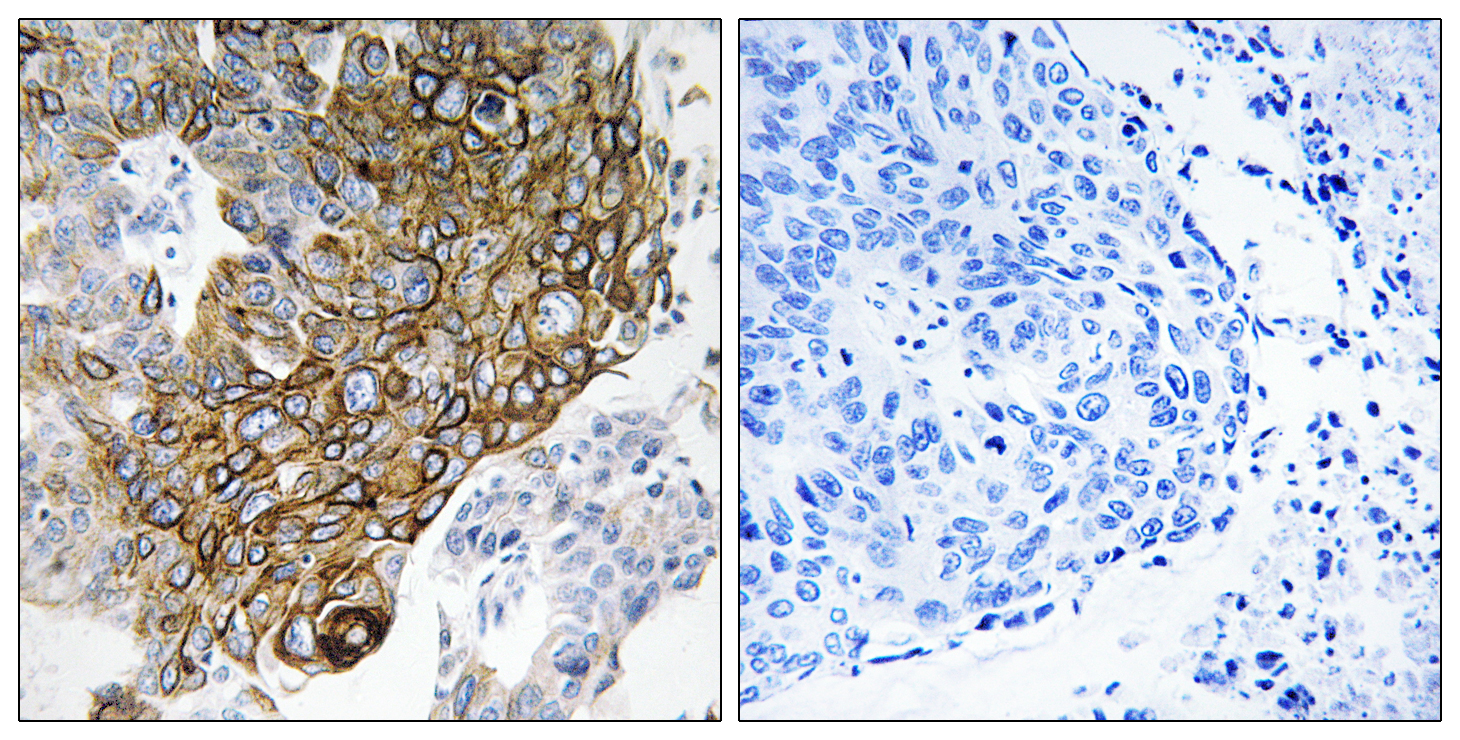Connexin 46 Polyclonal Antibody
- Catalog No.:YT1048
- Applications:IHC;IF;ELISA
- Reactivity:Human;Mouse;Rat
- Target:
- Connexin 46
- Gene Name:
- GJA3
- Protein Name:
- Gap junction alpha-3 protein
- Human Gene Id:
- 2700
- Human Swiss Prot No:
- Q9Y6H8
- Mouse Gene Id:
- 14611
- Mouse Swiss Prot No:
- Q64448
- Rat Gene Id:
- 79217
- Rat Swiss Prot No:
- P29414
- Immunogen:
- The antiserum was produced against synthesized peptide derived from human GJA3. AA range:151-200
- Specificity:
- Connexin 46 Polyclonal Antibody detects endogenous levels of Connexin 46 protein.
- Formulation:
- Liquid in PBS containing 50% glycerol, 0.5% BSA and 0.02% sodium azide.
- Source:
- Polyclonal, Rabbit,IgG
- Dilution:
- IHC 1:100-500;IF ICC 1:100-500;ELISA 1:5000-20000
- Purification:
- The antibody was affinity-purified from rabbit antiserum by affinity-chromatography using epitope-specific immunogen.
- Concentration:
- 1 mg/ml
- Storage Stability:
- -15°C to -25°C/1 year(Do not lower than -25°C)
- Other Name:
- GJA3;Gap junction alpha-3 protein;Connexin-46;Cx46
- Molecular Weight(Da):
- 47kD
- Background:
- The protein encoded by this gene is a connexin and is a component of lens fiber gap junctions. Defects in this gene are a cause of zonular pulverulent cataract type 3 (CZP3). [provided by RefSeq, Jan 2010],
- Function:
- disease:Defects in GJA3 are the cause of zonular pulverulent cataract type 3 (CZP3) [MIM:601885]. CZP3 is a form of autosomal dominant congenital cataract.,function:One gap junction consists of a cluster of closely packed pairs of transmembrane channels, the connexons, through which materials of low MW diffuse from one cell to a neighboring cell.,similarity:Belongs to the connexin family. Alpha-type (group II) subfamily.,subunit:A connexon is composed of a hexamer of connexins. This particular connexin is a component of lens fiber gap junctions, can form both junctional and non-junctional ("hemi-") channels.,
- Subcellular Location:
- Cell membrane ; Multi-pass membrane protein . Cell junction, gap junction .
- Expression:
- Lens fibers,
Oxidative Stress-Induced TRPV2 Expression Increase Is Involved in Diabetic Cataracts and Apoptosis of Lens Epithelial Cells in a High-Glucose Environment. Cells2022 Jan;11(7):1196. Rat lens epithelial cells
- June 19-2018
- WESTERN IMMUNOBLOTTING PROTOCOL
- June 19-2018
- IMMUNOHISTOCHEMISTRY-PARAFFIN PROTOCOL
- June 19-2018
- IMMUNOFLUORESCENCE PROTOCOL
- September 08-2020
- FLOW-CYTOMEYRT-PROTOCOL
- May 20-2022
- Cell-Based ELISA│解您多样本WB检测之困扰
- July 13-2018
- CELL-BASED-ELISA-PROTOCOL-FOR-ACETYL-PROTEIN
- July 13-2018
- CELL-BASED-ELISA-PROTOCOL-FOR-PHOSPHO-PROTEIN
- July 13-2018
- Antibody-FAQs
- Products Images

- Immunohistochemistry analysis of paraffin-embedded human lung carcinoma tissue, using GJA3 Antibody. The picture on the right is blocked with the synthesized peptide.



